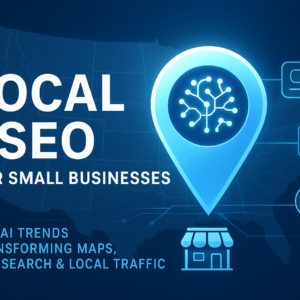Your website is often the first place people see your business. If it looks confusing, outdated, or hard to use, visitors may leave before they even explore your services. That is why good UI/UX design is so important. A website that looks attractive and is easy to navigate keeps visitors happy, builds trust, and encourages them to take action, whether it’s making an enquiry, signing up for a newsletter, or making a purchase.
UI, or User Interface, is about how your website looks. This includes elements such as buttons, colours, fonts, images, and the overall layout. UX, or User Experience, focuses on how your website functions. It measures how easy it is for visitors to find information, click links, complete forms, or finish other tasks. Both are essential. A site can look beautiful but be confusing to use, or it can be simple but dull. Great UI and UX together create a website that is visually appealing, functional, and enjoyable to use.
Why UI/UX Design Matters
Investing in professional UI/UX design has significant benefits for your business. Here’s why it matters:
Better Engagement: Visitors are more likely to stay on your site if they can easily find what they need. Clear navigation menus, prominent buttons, and simple layouts reduce frustration and keep users exploring your content.
Builds Trust: A well-designed website instantly makes your business look professional and credible. Users tend to trust websites that are organised, visually consistent, and easy to use.
Improves SEO: Search engines notice when visitors spend more time on your site. Pages with good UX often have lower bounce rates, which can positively impact your search engine rankings.
Even small adjustments, like making text easy to read or improving button visibility, can significantly improve how users perceive your business. Every element of your website, from headings to page layout, contributes to a better experience.
Key Elements of Great UI/UX
A website with excellent UI/UX design has several key features:
Responsive Design: Your website should work well on all devices, including mobile phones, tablets, and desktops. A responsive site adjusts automatically to different screen sizes, providing a seamless experience for users.
Fast Loading: Pages should load quickly. Visitors often leave if a site takes more than a few seconds to display. Optimising images, scripts, and hosting can make a big difference.
Easy Navigation: Menus, buttons, and links should be clear and simple to use. Users should never have to guess how to find information.
Consistency: Colours, fonts, and layout should be uniform across the website. Consistency helps users navigate more intuitively and makes the site look professional.
Accessibility: Everyone, including people with disabilities, should be able to use your website. Accessibility features such as alt text, clear fonts, and keyboard-friendly navigation improve the user experience for all visitors.
These elements make it easier for visitors to find what they need and complete actions, such as contacting your business, booking a service, or making a purchase.
How UI/UX Improves Conversions
Good design is not just about looking nice; it directly affects your business performance. Clear call-to-action buttons, simple forms, and obvious next steps make it easier for visitors to take action. For example, a visible “Contact Us” button can significantly increase enquiries. Reducing the number of steps in a sign-up or purchase process improves the likelihood that users will complete it.
A website that balances attractive design with smooth usability turns visitors into customers. It also encourages them to return, recommend your business, or follow your updates. Every detail—from colour contrast to button placement—affects how users interact with your site.
Why Professional Help Matters
While it might be tempting to design your website yourself, professionals can make a big difference. Experienced designers and developers analyse user behaviour, optimise layouts, and build interfaces that work well for both visitors and search engines. They also handle technical details like speed optimisation, mobile responsiveness, and SEO-friendly structure.
Working with a trusted WordPress development agency London ensures your website looks great, functions smoothly, and is fully optimised for performance and search visibility. Experts can implement advanced features like interactive elements, dynamic content, and professional imagery, making your site more engaging.
Professional designers also focus on future scalability. They build websites that can grow with your business, allowing you to add new pages, features, or services without breaking the design.
Real-World Examples of UI/UX Impact
Consider two websites: one with cluttered menus, slow-loading pages, and hard-to-read text; the other with clear headings, easy navigation, and fast performance. Users are far more likely to stay, interact, and convert on the second website. Even small changes, like adjusting the font size, simplifying navigation menus, or improving button placement, can lead to noticeable improvements in engagement and sales.
Interactive elements, like hover effects or simple animations, can make the website feel more modern and user-friendly. However, overcomplicated design can confuse visitors, so balance is key.
Conclusion
Good UI/UX design can transform how people see and interact with your business online. It keeps visitors on your website longer, builds trust, improves SEO, and increases conversions. While some improvements can be done in-house, professional expertise ensures your website is both attractive and functional.
By partnering with a trusted WordPress development agency in London, you can create a website that not only looks great but also works perfectly for your audience. A professional design keeps visitors engaged, encourages action, and helps your business grow.
Take the next step today and give your website the upgrade it deserves. A well-designed site can help your business stand out, improve user satisfaction, and create long-term growth.



